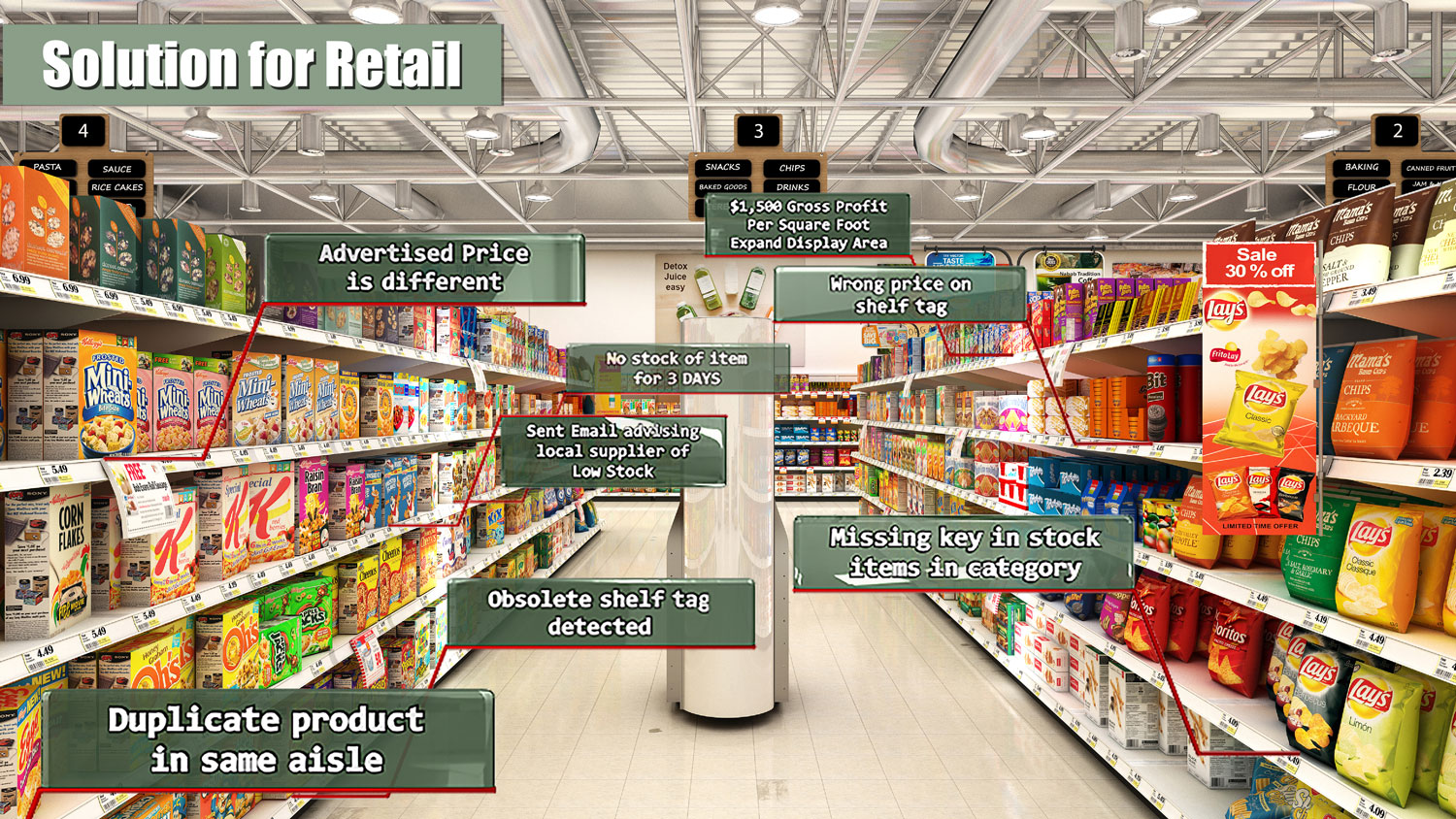A Canadian startup has created a revolutionary robot can scan any retail store in less than an hour, imaging every product and associated price tag in every aisle in ultra-high resolution and 3D. Once completed, the system provides retailers and manufacturers with the precise location of everything in the store, as well as all instances of missing price tags, empty shelving and more. During the launch, the company also announced the roll out of demonstration units for large chain stores across North America and Europe, in addition to production units.
With its user-friendly interface, the robot saves retailers both time and money by eliminating the necessity for labour intensive manual store checks. As the robot travels down each aisle, it automatically compiles and processes huge amounts of ‘big data’, producing a data set that makes it easy for retailers to identify every product on their shelves, ensure price tag compliance, monitor stock levels and analyze product geoinformation.
After each scan, the system also provides retailers with an interactive 3D map of their store, precisely depicting each product exactly as it is displayed on the shelf. This realistic, virtual store can either be displayed on the company’s website for consumer use or toured remotely by retail executives at HQ. During the tour, and depending on a range of data and set permissions, users can securely view sales and performance data overlaid on any product.
 The 3D stores produced by the robot will revolutionize online shopping and herald in an era of “reality”’ online shopping. With one click, customers can virtually navigate through any scanned store anywhere in the world and view products on the shelf exactly as they are. As shoppers tour the aisles, they can pull products off the shelf, spin them around to read more product information and add them to a shopping cart to be shipped or delivered by local courier.
The 3D stores produced by the robot will revolutionize online shopping and herald in an era of “reality”’ online shopping. With one click, customers can virtually navigate through any scanned store anywhere in the world and view products on the shelf exactly as they are. As shoppers tour the aisles, they can pull products off the shelf, spin them around to read more product information and add them to a shopping cart to be shipped or delivered by local courier.
Included with the robot is a 3D planogram application that takes retail space management and visual merchandising to an entirely new level. Unlike traditional methods of creating planograms, which are based primarily on static, theoretical inputs, the robot intelligently generates dynamic “realograms” based on actual, scanned data. By analyzing a store’s sales data in relation to the actual location of products within the store, the planogram software is able to reliably determine where products should be placed based on where products actually sell best in each store.
This robotic solution is an all-inclusive system that ties super-intelligent robotics to retail, revolutionizing the way retailers collect, organize, and analyze information. In the world of retail, decisions regarding shelf space and product placement are primarily based on old data and broad estimations, rather than real information and store specific data. With this revolution robotic system, retailers will be able to begin decision making with ‘I know’ instead of ‘I think.’”

